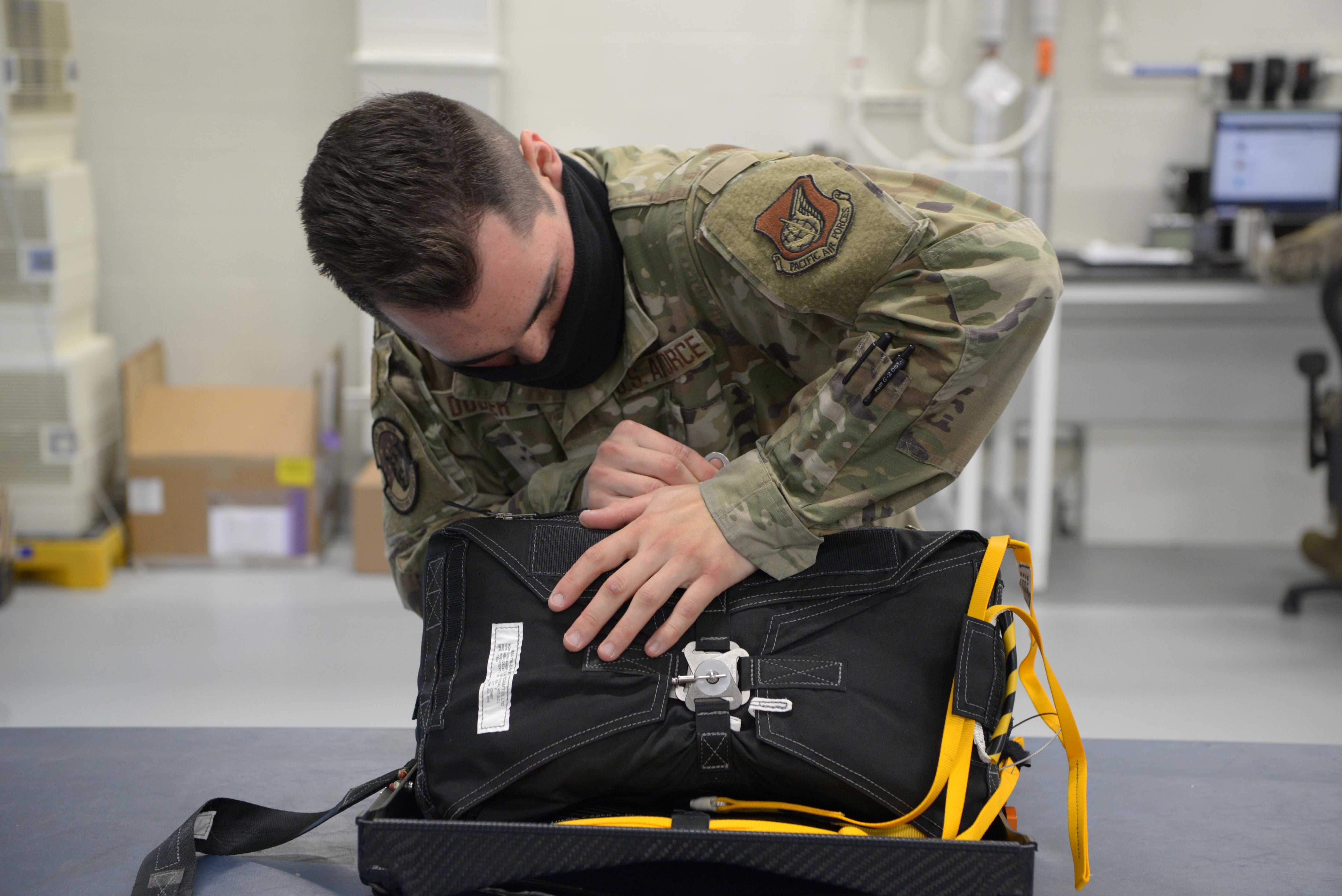More than a decade after the Air Force created its aircrew flight equipment specialty, the field is suffering from a lack of expertise. A new Rand Corp. report offers some ideas to fix it.
Aircrew flight equipment (AFE) workers are key to keeping airmen safe at altitude, overseeing maintenance for flight helmets, parachutes, safety rafts, and other gear that people like pilots and special warfare airmen need on their daily missions. The career track formed in 2008 through a merger of two previous career fields, aircrew life support and survival equipment.
“Despite career field and Air Combat Command leadership attention,” Rand researchers wrote, “proficiency of airmen in this career field has generally declined.”
Research published March 17 by Rand — a federally funded think tank with a specialized branch that handles research requests from the Air Force — found that lackluster AFE training is at the heart of the problem. Airmen are also spread too thin from ongoing operations to improve, and without an experienced cadre of enlisted airmen in charge, the profession is low on proficiency and morale.
When asked to gauge how well AFE workers perform their jobs, airmen from eight bases indicated proficiency hovers around 60 percent as a whole.
“Together we can do everything, but independently we can’t,” one airman told researchers, according to the report. “Keeping all the programs in mind like [hazardous material], supply, inventory, nobody can do that. All that stuff and having to do equipment and train — nobody can do all of it.”
At the time of the interviews, participants were stationed at Barksdale Air Force Base, La.; Davis-Monthan AFB, Ariz.; Fort Wayne Air National Guard Base, Ind.; Hurlburt Field, Fla.; Joint Base Langley-Eustis, Va.; Robins AFB, Ga.; Sheppard AFB, Texas; and Travis AFB, Calif.
Air Combat Command has flagged AFE problems for more scrutiny since at least 2013. Issues with AFE’s safety-related work has led units to limit flying in recent years, according to the report, and inspections continue to turn up new problems. The service continued to ground aircraft due to AFE issues even as the research team finished up its project, the report noted.
Rand issued four recommendations, ranging from growing the workforce to better career planning. About 90 percent of AFE jobs that are funded are filled, the center noted, but said the workforce may be further undermanned if additional unfunded positions are empty, too.
First, the report found, the Air Force should assign AFE workers to the same type of aircraft for longer periods of time, rather than moving employees between disparate airframes like fighter jets and mobility planes. If done correctly, that could reduce the time spent in training to learn about new platforms and build skill sets in each area.
Researchers suggested creating a formal strategy for moving troops between AFE shops to direct those job changes, rather than continue relying on the current plan that forces airmen to hop between multiple teams on a base.
“Promotion opportunities may need to be protected if they are affected by reduced moves,” the researchers said. “In the longer run, increase manpower to account for the additional training time that is needed when shop moves occur.”
Rand added that the service should manage and resource training differently. It calls for bringing in experts like retired AFE specialists who can offer insight that airmen might not have gotten in the classroom or during their more limited experience.
The report also recommended that the Air Force could use noncommissioned officers in charge and superintendents more effectively by assigning them to jobs that correspond with their recent work with a particular type of aircraft, teaching planning skills specific to the AFE field, and putting in more work to develop them as AFE leaders.
“The Air Force needs to take steps to establish more effective advocacy for the career field — one of only a few enlisted-only career fields in the Air Force,” Rand wrote. “One way to do this could be to develop a select set of officers with AFE-specific expertise and experience and provide them with special-experience identifiers.”
That could build a corps of advocates on the officer side to push for long-term investments in AFE above the local level.
“Who has the big picture?” Rand asked. “The career field needs someone who is the functional lead — not only organizationally, but who has this career field on their radar and is in a position to navigate the organizational challenges required to support real and substantial changes.”
Rachel Cohen is the editor of Air Force Times. She joined the publication as its senior reporter in March 2021. Her work has appeared in the Washington Post, the Frederick News-Post (Md.), Air and Space Forces Magazine, Inside Defense, Inside Health Policy and elsewhere.





